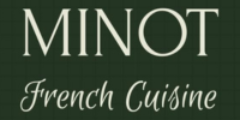The History and Evolution of French Cuisine
French cuisine has a storied history that dates back to the Middle Ages, where food was heavily influenced by the agricultural and hunting habits of the time. Meals were characterized by their plentiful and robust nature, often featuring game, poultry, and bread. The evolving culinary traditions began to take root, incorporating spices and flavors introduced through trade routes. These early developments laid the foundation for what would become a profound culinary heritage.
During the Renaissance, the introduction of new ingredients from the New World further enriched French food. However, it was the French Revolution in the late 18th century that dramatically reshaped French cuisine. The revolution led to the dissolution of the guild system that had previously controlled the culinary arts, resulting in the proliferation of public restaurants and a more democratic approach to food. This period marked the transition from medieval fare to a more refined, technique-driven culinary ethos.
The 19th century saw the rise of haute cuisine, thanks largely to the efforts of Marie-Antoine Carême and later, Auguste Escoffier. Carême, often considered the first celebrity chef, revolutionized presentation and structure in cooking, emphasizing elaborate dishes and intricate techniques. Escoffier further refined and simplified Carême’s principles, codifying the five “mother sauces” and streamlining kitchen operations with his brigade system. These contributions cemented France’s reputation as the epicenter of culinary excellence.
In the contemporary era, French cuisine continues to evolve, embracing regional diversity and an emphasis on fresh, locally sourced ingredients. From the rustic, hearty dishes of Brittany to the refined, Provençal flavors of the South, regionalism plays a crucial role in modern French gastronomy. Chefs today, while respecting traditional methods, are not afraid to incorporate global influences and innovative techniques, ensuring that French cuisine remains dynamic and progressive.
Notable figures in this transformative journey include Marie-Antoine Carême and Auguste Escoffier, whose monumental contributions have shaped what we recognize today as French gastronomy. Through their pioneering work, French cuisine has achieved a timeless quality, revered for its balance of tradition and innovation.
Signature Dishes and Regional Specialties
French cuisine, known for its elegance and rich flavors, celebrates a remarkable variety of signature dishes and regional specialties that highlight the nation’s culinary diversity. Among the quintessential French dishes, coq au vin stands out as a classic. This dish, which translates to “rooster in wine,” dates back to ancient Gaul. Traditionally prepared with rooster, it is now commonly made with chicken, slow-cooked in red wine with mushrooms, garlic, and onions, offering a deep, aromatic flavor.
Another iconic dish is bouillabaisse, a seafood stew originating from the port city of Marseille. It combines various fish and shellfish with Provençal herbs and is traditionally served with a rouille sauce. Bouillabaisse is not merely a meal; it is a window into the maritime culture of southern France. On the sweeter side, the croissant, a buttery, flaky pastry, has become a breakfast staple worldwide. Originating in Austria and later perfected in France, the croissant’s light, airy layers are a testament to French expertise in pastry-making.
Regional specialties are a vibrant aspect of French culinary tradition, with each region offering distinct flavors and ingredients. In Brittany, the focus is on the bountiful harvest of the sea, featuring dishes such as moules-frites (mussels with fries) and crêpes. The Normandy region, known for its dairy farms, favors rich, creamy dishes like coquilles Saint-Jacques à la Normande (scallops in a creamy white wine sauce) and camembert cheese.
Provence, in the southeast, infuses its cuisine with Mediterranean influences. Olive oil, garlic, and fresh herbs such as thyme and rosemary are staples. Dishes like ratatouille and salade niçoise epitomize the vibrant, sun-kissed flavors of the region. Each of these regional cuisines is rooted in local traditions and ingredients, often reflecting the history and climate of the area.
The tapestry of French cuisine, with its signature dishes and regional specialties, offers a rich, immersive experience into the culture and traditions of France. Through its diverse culinary heritage, France continues to inspire and delight food enthusiasts around the world.
